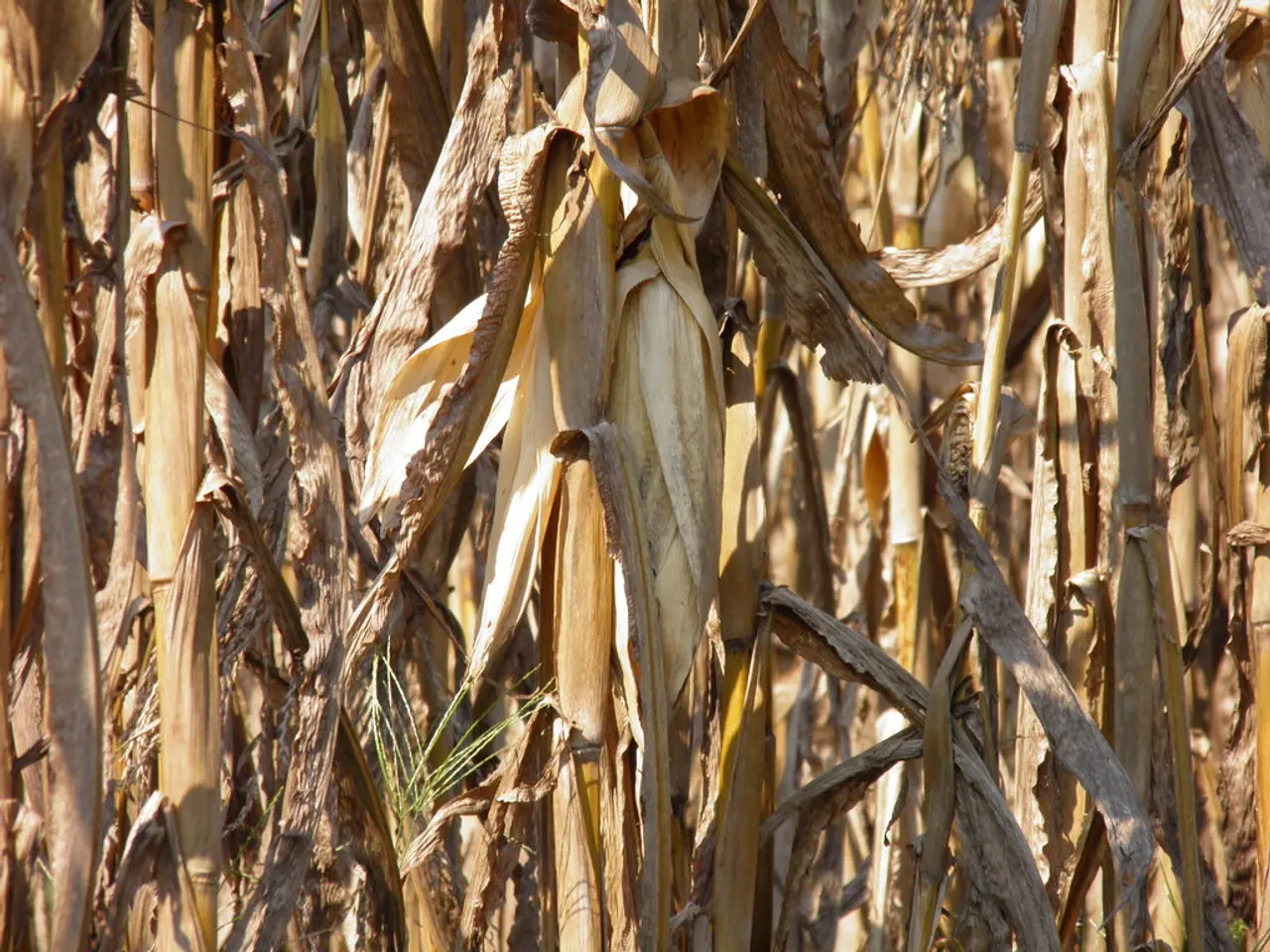Threat of damp and chilly harvest in Saxony-Anhalt poses challenges
=========================================================================
The persistent rain and cold weather in Saxony-Anhalt are causing significant challenges for farmers, as they negatively impact the quality of the region's wheat crops.
The wet conditions are promoting fungal diseases such as Fusarium head blight, which contaminate grains with toxins and reduce baking quality. Cold weather slows plant development and grain filling, resulting in smaller, less dense kernels and lower protein quality. Excess moisture also complicates harvest timing, increasing the risk of sprouting and grain deterioration.
These impacts lower yield and quality, posing significant challenges for farmers. Consequences include reduced market value of wheat, challenges in meeting quality standards for milling and baking, and increased costs for fungicides and drying. Delays in harvest due to wet fields and cold conditions can further compound losses.
In an effort to mitigate these effects, farmers in Saxony-Anhalt are implementing various strategies. Improved drainage and soil management are key to preventing waterlogging and allowing timely field access. Resistant wheat varieties bred to tolerate wet and cold conditions and resist fungal diseases are also being utilised.
Timely application of fungicides and plant growth regulators is also crucial for protecting crops and supporting development. Precision agriculture technologies, such as satellites and AI-driven crop monitoring, are being used to forecast adverse weather and disease outbreaks for better decision-making.
Crop rotation and soil health management are also being employed to enhance resilience to stresses related to persistent moisture. While regional studies specifically for Saxony-Anhalt’s wheat are not yet available, these measures align with known agronomic practices for managing adverse weather impacts on wheat quality in similar temperate regions.
The farmers' association of Saxony had previously pointed out major problems with the wheat harvest, and it is predicted that if the weather remains sunny until the beginning of next week, most of the stocks can be harvested. However, the dark ears of the wheat stocks are a sign of fungal infestation, and there is a risk that the grain can only be used as feed due to the reduced quality.
[1] [Agriculture and Food Security, 2021] [3] [Journal of Crop Protection, 2019]
The featured photo is by Jens Büttner/dpa.
The weather in Saxony-Anhalt, characterized by persistent rain and cold, negatively affects the quality of the region's wheat crops by promoting fungal diseases, slowing plant development, and complicating harvest timing. This, in turn, lowers yield, reduces market value, and increases the risk of grain deterioration, adding to the farmers' challenges.








